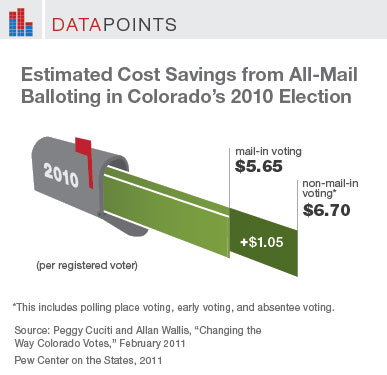Cost Savings from All-Mail Balloting
A recent study found that if all Colorado counties conducted elections solely by mail in 2010 they would have reduced costs by $1.05 per registered voter.

The study examined expenditures in the 2010 election through surveying county clerks about election administration and operating costs. Researchers compared counties that conducted elections by mail and counties that used a hybrid of voting options, including polling places, early voting, and absentee voting.
The study found that all-mail balloting would have lowered the 2010 average cost per voter by almost 19 percent, from $6.70 to $5.65.
One reason for the cost savings may be a reduction in labor costs. Alan Wallis, the study’s lead author, explained that the single biggest cost of operating polling places is hiring and training temporary poll workers. Election clerks also frequently pay permanent employees overtime on Election Day.
In contrast, voting-by-mail ballots arrive over a several-week period, and clerks can use their permanent, trained staff to manage the ballot processing.






